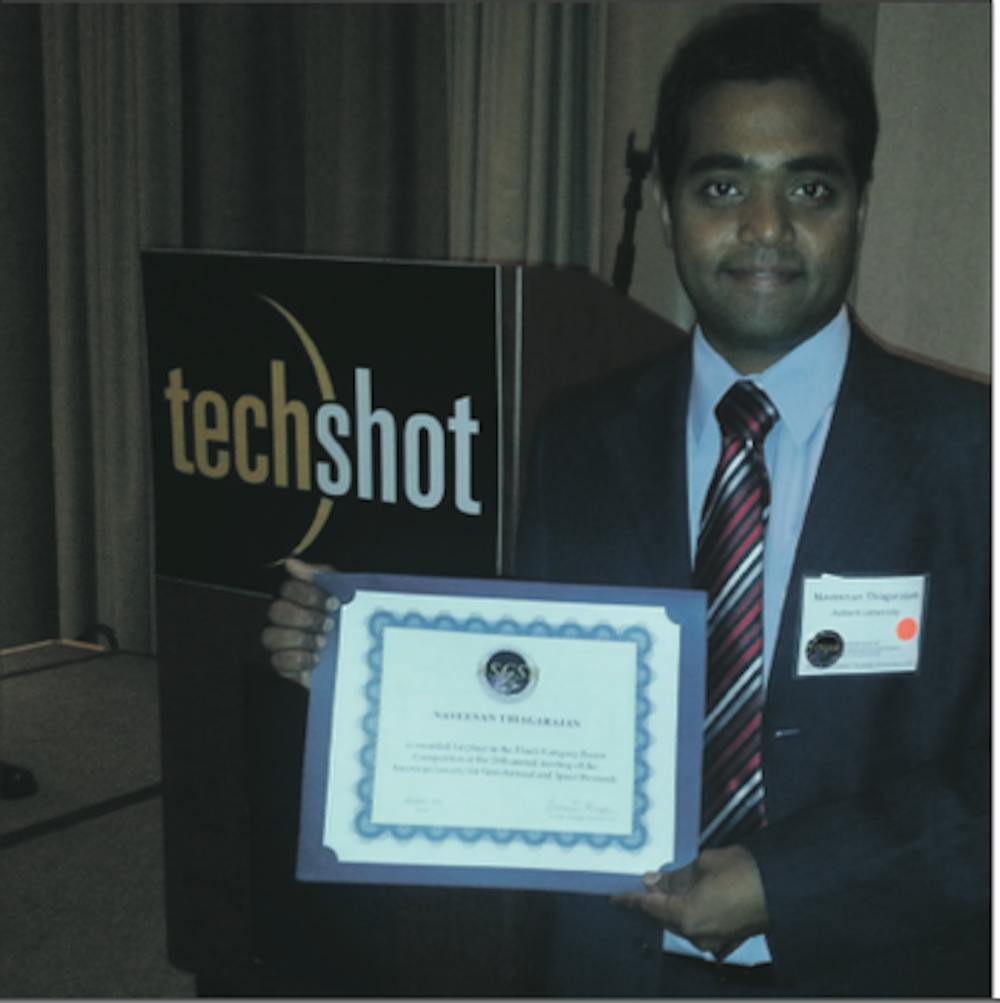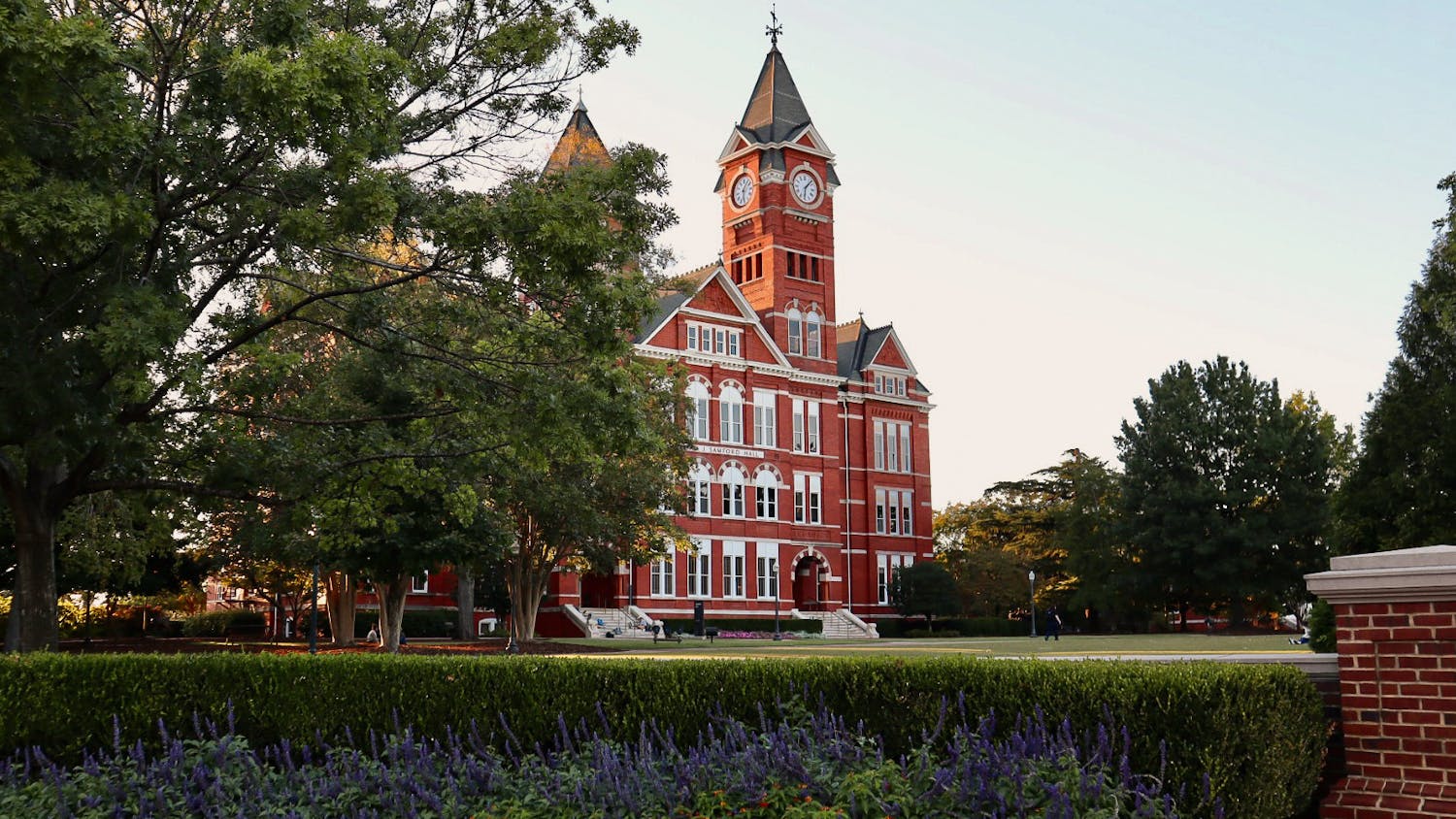Naveenan Thiagarajan's flight aboard NASA's Vomit Comet gave wings to his experiment when it was judged to be the best at the American Society for Gravitational and Space Research Conference in New Orleans, Saturday, Dec. 1.
Thiagarajan, Auburn doctoral student in mechanical engineering, worked in collaboration with Oregon State University to conduct his experiment at the Johnson Space Center in Houston, Texas.
The research conducted demonstrates an efficient liquid cooling system for space electronics where the liquid is circulated by bubble motion using surface modifications, and not consuming any spacecraft power to cool.
"To prepare for the flight, (Thiagarajan) spent nine months building a whole experimental setup," said Shushil Bhavnani, Thiagarajan's dissertation advisor and professor. "It was very complicated and it took a lot effort."
After the flight Thiagarajan's spent six months analyzing the data.
"Really that poster represents a year and a half of his life," Bhavnani said.
Thiagarajan and his group of collaborators flew for two days in Houston on NASA's aircraft that achieves zero gravity flying in parabolic arcs, or by rising up to 38,000 feet and plummeting down to 1,500 feet in 20 seconds.
"In its downward motion, you start floating in the aircraft and that is when you start feeling zero gravity," Bhavnani said. "All the data he collected during that flight was presented on his poster in New Orleans."
The experiment consisted of 80 parabolic arcs in two days, 40 arcs per day in a two-hour period. The ride was like a giant roller coaster, with many precautions to take in preparation, Thiagarajan said.
Flying the Vomit Comet takes about one year of preparation at least to prepare the experiments because under zero-gravity anything set into motion keeps following the same trajectory.
"So if I do not design the experiments properly, what would happen is something could come loose, and it would be floating around in the air," Thiagarajan said. "It could be disastrous."
Logan Strid, graduate student at Oregon State University, worked with Thiagarajan on the project and rode with him on the Vomit Comet. Strid and Thiagarajan had weekly video conferences where they shared information.
"He's really laid-back and easy to work with, but he's always got something in the back of his mind," Strid said.
"He's always working on something.
When you ask him a question he's always got some number or some figure he knows.
"He's really prepared all the time, but he's really a personable guy at the same time so it's really easy to work with him."
Thiagarajan is a hard working person and remains cheerful when working on research, Bhavnani said.
Thiagarajan has the ideal temperament of a graduate student and research assistant, Bhavnani said.
Even if the experiment would have failed, Thiagarajan's would have experienced microgravity and zero gravity.
"So that was very interesting and I am even happier that the experiment worked," Thiagarajan said.
"To know that the experiment came off good and to go on to present and know that people recognize your work, it is satisfying to say the least," Thiagarajan said.
Do you like this story? The Plainsman doesn't accept money from tuition or student fees, and we don't charge a subscription fee. But you can donate to support The Plainsman.





